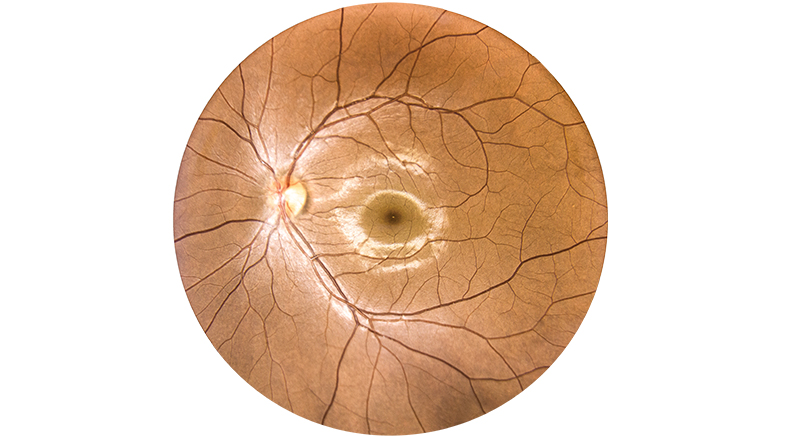Stars of science
-
- from Shaastra :: vol 01 issue 04 :: Jul - Aug 2022

A stellar cast gave shape to science and technology in India as the fledgling nation found its feet. A glimpse of those who made a difference.
The first evidence of India's promise as a scientific nation emerged roughly three decades before independence. In the 1920s, three physicists in Bengal – C.V. Raman, Meghnad Saha and S.N. Bose – worked in embryonic institutions and performed research at the frontiers of physics. Saha developed the ionization equation in 1920. Bose published work on the foundations of quantum statistics in 1924. Raman discovered the Raman Effect in 1928.
Raman won a Nobel Prize, but the two others too had done work worthy of the grand prize. It was the only instance of cutting-edge research in physics outside Europe at that time, barring the discovery of the Compton Effect in America. Not long after the establishment of modern science in India, scientists had demonstrated that they could make discoveries with the potential to change the course of science. India could have used their work as a springboard for a rapid expansion of scientific research in the country.
For decades after independence, when India began to create a scientific ecosystem, its leaders focused primarily on developing institutions and people.
But events took a different turn.
With hindsight, the work of the physics trinity may be wished away as the result of a unique combination of circumstances: the creative mindset of the Bengal Renaissance, opportunities generated by the birth of quantum mechanics and relativity, and the inspiration provided by the freedom movement. These circumstances did not recur in India in such a powerful combination. The Bengal Renaissance withered away without creating a similar movement in the rest of the country. The nature of science changed after the Second World War, with scientists needing expensive equipment for research at its frontiers. The freedom movement ceased to inspire young men and women in the way it did before independence. Indian science, even in a restricted sense, fell behind that of Europe and America.
At the end of the 20th century, Indian science was far from fulfilling its true potential. But it continued to show promise, creating pockets of excellence.
However, the embers of the 1920s did not die down fully. They continued to burn in a few individuals and institutions for several decades, kindling larger fires that rose and fell periodically as the century progressed. It burned for a while at the Tata Institute of Fundamental Research (TIFR). It burned at the Indian Institute of Technology (IIT) in Kanpur, at the National Chemical Laboratory (NCL) in Pune, at the Indian Institute of Science (IISc) in Bangalore. It was not all science. Technology, usually a poor relation of science in India, flourished in atomic and space research institutions. At the end of the 20th century, Indian science was far from fulfilling its true potential. But it continued to show promise, creating pockets of excellence.
RIDING ON RESILIENCE
A key event in modern Indian science happened in 1939, when the Second World War broke out in Europe. Homi Bhabha, a young physicist working in Cambridge on a research fellowship, was on vacation in India during that time. The war closed the door on opportunities for him to work in Europe as a physicist. He had to make alternative plans in India.
Six years later, in 1945, Bhabha's plans fructified into the TIFR in Bombay. Bhabha had seen outdated infrastructure and a laid-back work culture in the country. He wanted to make a fresh beginning by building a model institution. The new institute reified all that he believed was necessary to conduct research in modern science: a comfortable atmosphere bordering on luxury, the freedom to think and work independently, and constant interaction with the best scientists in the world. The institute that he built by the sea flowered into one of the best in the world in mathematics and physics.

By Indian standards and practices, TIFR looked like an anachronism. India was a poor nation at the time of independence, with an annual per capita income of $60 and a literacy rate of 12%. The new institute appeared grand and luxurious. It drew a steady stream of the world's best physicists and mathematicians, but the model was not easy to replicate on a large scale. Even TIFR struggled as the nation became older.
For decades after independence, when India began to create a scientific ecosystem, its leaders focused primarily on developing institutions and people. Heads of institutions – Homi Bhabha, Satish Dhawan, Y. Nayudamma – lured trained scientists from abroad. Many top scientists came back to India on their own, hoping to build a new nation based on a foundation of science and technology. Big buildings were set up on sylvan campuses. However, India lacked funding mechanisms for research projects. Bureaucrats severely restricted the outflow of foreign exchange. A laid-back culture stifled the ambitious.
Lack of upward mobility and funding had for long affected the careers of the average Indian scientist. It was not uncommon for scientists to join a top institution as a lecturer and retire 30 years later as a lecturer. Research in the country was not at the cutting edge as Indian institutions lacked the right equipment. Poor infrastructure and bureaucracy were legacies of the pre-independence era. The British government did not build research institutions in India.
The decades leading up to Indian independence were tumultuous years in global politics, science, technology, art. The two World Wars disrupted the global order and led to a massive destruction of lives and property. However, they increased the investments in science in Europe and America, helping to create new technology and generate ideas. When the Second World War ended, relativity and quantum mechanics had rewritten contemporary physics. Quantum mechanics had begun to penetrate chemistry, generating new equipment to investigate the atomic world and changing the way chemists thought about reactions. Biology, too, was on the cusp of a revolution, driven by X-ray diffraction and other equipment that could picture large molecules. Meanwhile, astronomers were building new telescopes to gaze far into the universe.
Indian scientists confronted this world when they began to do research after independence. They needed to buy X-ray diffraction machines, spectrometers, microscopes and so on. India did not have a private industry capable of building and selling scientific equipment. Scientists also needed to build, by themselves, large telescopes, particle detection equipment, and other instruments. The country did not have a components industry either.
From the 1950s to the end of the century, scientists struggled through exacting conditions, but managed to keep advanced science alive in the country.
From the 1950s to the end of the century, scientists struggled through these conditions and somehow kept advanced science alive in the country. In the process, a few also did some serious research and developed cutting-edge technology. C.S. Seshadri and M.S. Narasimhan at TIFR produced breakthrough mathematics in algebraic geometry. S.N. De at the Calcutta Medical College discovered the cholera toxin. Vikram Sarabhai conceived and built the foundations of a space organisation, which was developed further by Satish Dhawan. Govind Swarup, an astronomer who joined TIFR from Stanford, built the largest radio telescope in the world at Ooty. C.N.R. Rao struggled through the 1960s and 1970s with rudimentary equipment, but helped create, through his influence and relentless lobbying, funding mechanisms for research.
Judging from the conditions in India from 1950 to 1990, these were remarkable feats. By the end of the century, the Information Technology (IT) and pharma industries were developing rapidly, raising the confidence of Indian engineers and bringing them global attention. The space programme was also maturing fast. India had developed nuclear reactors, not to speak of conducting two nuclear tests. Research funding fell through the 1990s as the country liberalised, but Indian science turned a corner with the new century.
Economic liberalisation created a new mindset among bureaucrats, scientists, engineers and entrepreneurs. The 1990s saw the private sector increase investments in science, especially in the pharmaceutical industry. The government improved the procedures for imports. In particular, India abolished the Directorate General of Technical Development, an institution that oversaw and often disallowed foreign exchange for travel and import of scientific components. Indian bureaucrats and politicians had acknowledged that science needed to expand in the country. This expansion was carefully planned and executed over the next ten years.
The Indian university system grew significantly over the decade. Among the new institutions was the Indian Institute for Science Education and Research (IISER), with five centres around the country. The IISERs were modelled on the IITs. Till then, India did not have a top-notch science institution for undergraduate study. The IISERs brought research and undergraduate education closer together. At the same time, the IITs continued a journey begun in the 1990s to reorient themselves from teaching to research. Hundreds of young scientists returned from abroad to the IITs and IISERs.
Research infrastructure improved in Indian institutions in the first decade of the century. Investment in R&D also doubled during this decade. New institutes or centres were set up for genomics, translational science, theoretical sciences, nanoscience and technology. The IITs and other academic institutions set up incubation centres for entrepreneurship. For the first time since independence, the country had an R&D ecosystem of sorts, from fundamental research to start-ups.
India is the fourth in the world in terms of scientific output. It has major technology industries in steel, chemicals, IT, pharma and generic biologics.
Compared to other medium-income countries, India's current scientific and technology capabilities are quite sophisticated. India is the fourth in the world in terms of scientific output. It has major technology industries in steel, chemicals, IT, pharma and generic biologics. It is a major space power and has impressive capabilities in building nuclear reactors. Its quality of research in engineering has been rising steadily.
On the other hand, India has too few scientists for a large population, at just 253 per million population.Rich countries have between 3,000 and 6,000 scientists per million population. The Indian scientific ecosystem is small, with many missing pieces. There is no significant equipment manufacturing industry in India. Although the money available for research has gone up, the private sector has not done enough in R&D to generate economic value out of the knowledge in public institutions. There is a gap of a few years between the launch of state-of-the-art equipment in the West and its availability in Indian labs. Procedural delays continue to slow down research.
PROMISING FUTURE
Indian science has managed to survive – but not flourish. It is once again at a crossroads and waiting for big investment and expansion, not to speak of the removal of procedural hurdles. However, in spite of relatively small R&D investments, India has developed an impressive set of institutions that have kept research alive in many frontier areas of science and technology. Regardless of what the country achieves in the future, it is a good time to look back and acknowledge the contributions of the pioneers of early independent India.
Indian science is once again at a crossroads and is waiting for big investment and expansion, and the removal of procedural hurdles.
In the following pages, we provide an eclectic sample of the research in the last 75 years. But we do not take a narrow view of scientific achievement. The list also includes those who built institutions and those who developed technology. The list is by no means exhaustive. For every scientist we have selected, we could not include at least three others who would have been in their place. However, in a broad-based package, we have tried to provide a glimpse of the people who created Indian science and technology.
See also:
These scientists were also institution builders
Physicists who made quite a mark
When the chemistry was just right
These engineers foresaw the future
They shaped the development of indigenous technology
Have a
story idea?
Tell us.
Do you have a recent research paper or an idea for a science/technology-themed article that you'd like to tell us about?
GET IN TOUCH














